A delicious stir-fry of tender chicken and crunchy vegetables, chicken chop suey is very easy to make at home. Its tasty, thick sauce works well for other stir-fries too.
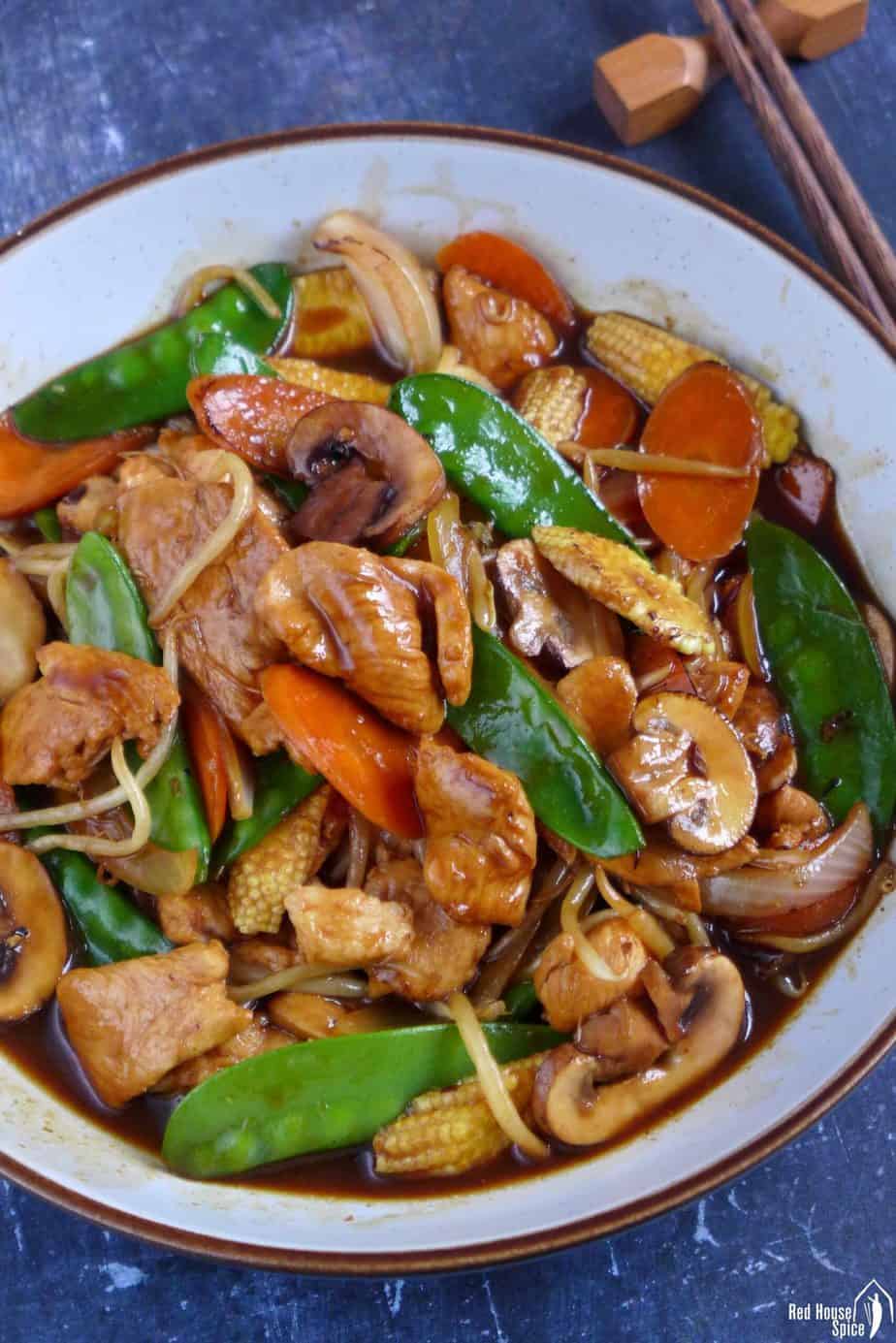
Jump to:
What is chop suey
People from China might have no idea what chop suey is, but it’s no doubt one of the most popular dishes in Chinese restaurants or takeout (takeaways) outside China. Believed to be an invention by Chinese immigrants in the US, it’s a quick stir-fry dish consisting of a protein ingredient, such as chicken, pork, beef, shrimp, egg, etc., a variety of vegetables and a soy sauce-based thick sauce.
The thing I love about cooking chop suey is that you can improvise a lot on the ingredients. It’s a great way to combine what you already have in the fridge and the cooking process is quick and easy. It takes two simple steps to make today’s chicken chop suey:
- Briefly marinate the chicken with starch then fry until it loses the pinkness. Transfer out and set aside.
- Cook a mixture of vegetables then add the chicken. Pour in the sauce. Once the sauce thickens, you’re ready to serve the dish.
Chop suey is often enjoyed with plain rice, but it works well when tossed with cooked noodles (That’s how Lo Mein is made).
Tenderize the chicken
I’ve heard many people saying that they love Chinese takeaway stir-fries for the tenderness of the meat. To achieve a succulent and soft texture, this is how I marinate and cook the chicken for chop suey.
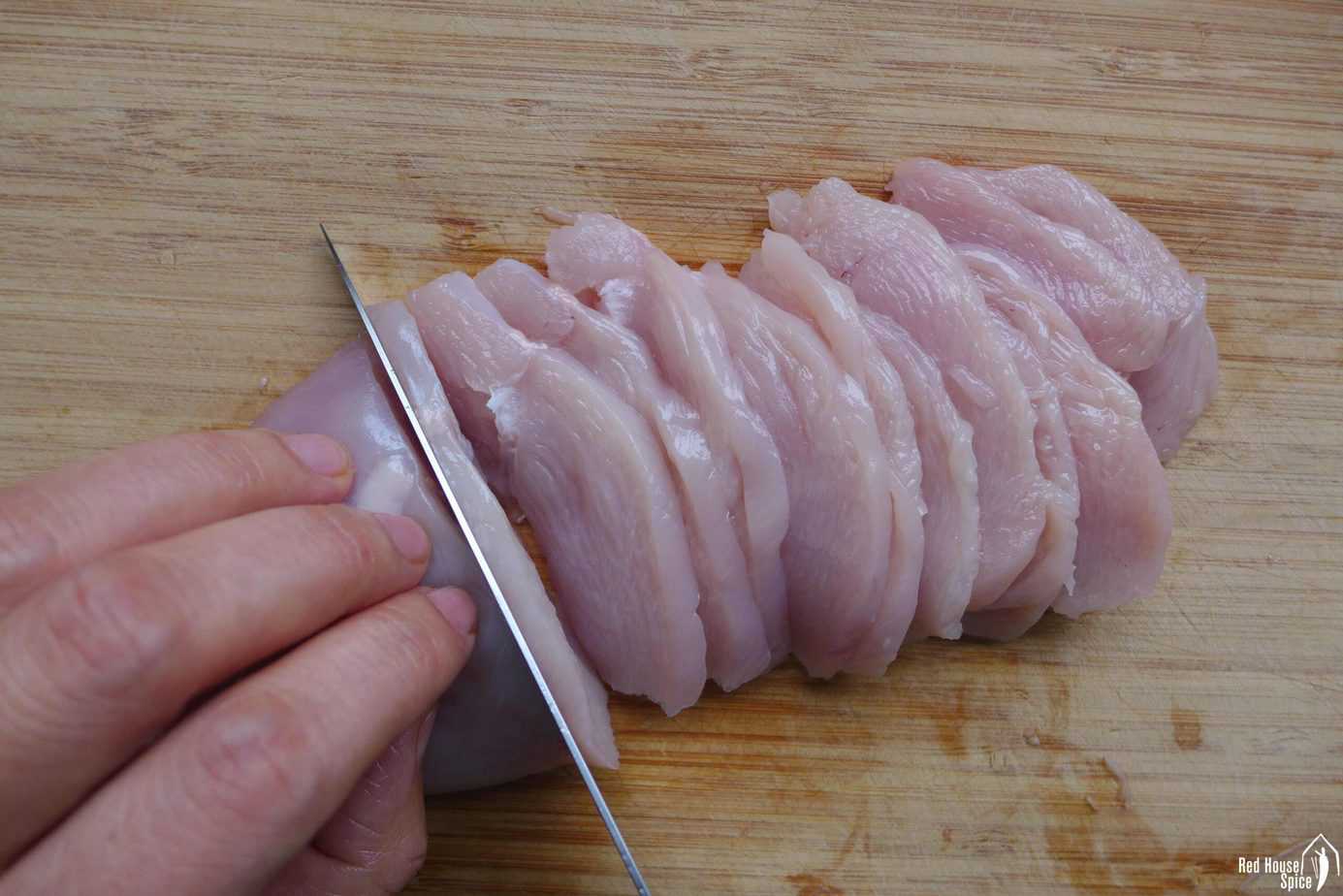
- Lay the chicken breast flat on a chopping board. Cut it crosswise into thin slices (about 5mm/0.2inch). It helps a lot if you sharpen your knife beforehand.
- Put the chicken into a bowl. Add tapioca starch (or cornstarch), salt and a little water. Stir well to make sure every piece is evenly coated.
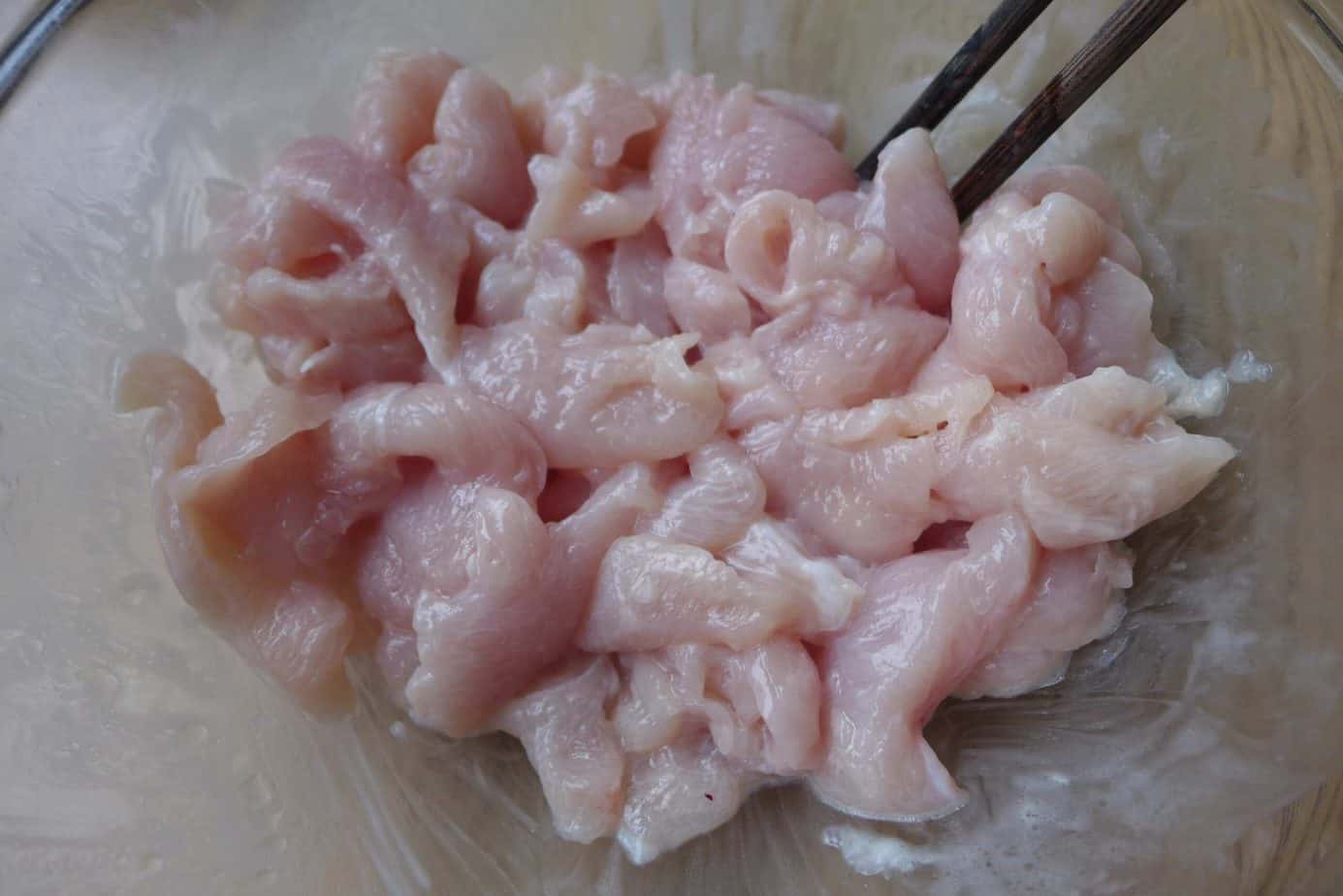
- Add a drop of oil then mix. This is to help separate the chicken pieces while stir-frying.
- Leave to marinate. You don’t need to count the time. After you’ve finished mixing the sauce, washing and chopping the vegetables, the chicken will be ready to be cooked.
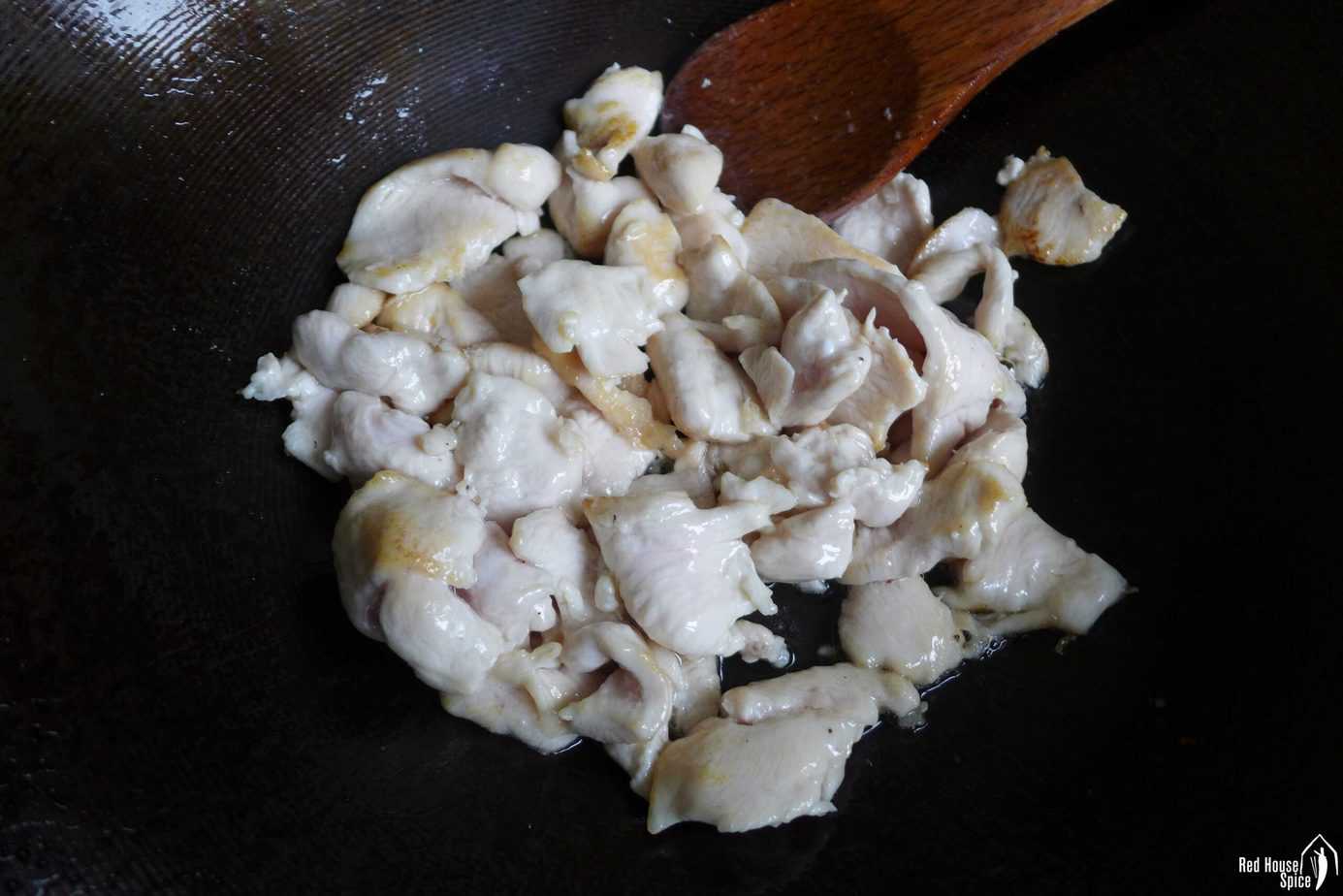
- Fry the chicken in oil over high heat. Stir constantly to distribute the heat. As soon as you see it loses its pinkness, remove it from the wok (It took me about 45 seconds).
- Vegetables are then fried on their own. Don’t add the chicken back to the wok until the very last cooking step. Overcooking will dramatically reduce its tenderness.
A tip on wok frying
I’ve received many questions on woks. My genuine opinion is that you can cook all the stir-fry recipes on my blog using a modern non-stick wok, but if you’re chasing an elevated flavour and keen to widen your experience on Chinese cuisine, I highly recommend you invest on a traditional carbon steel wok (They are cheaper as well!).
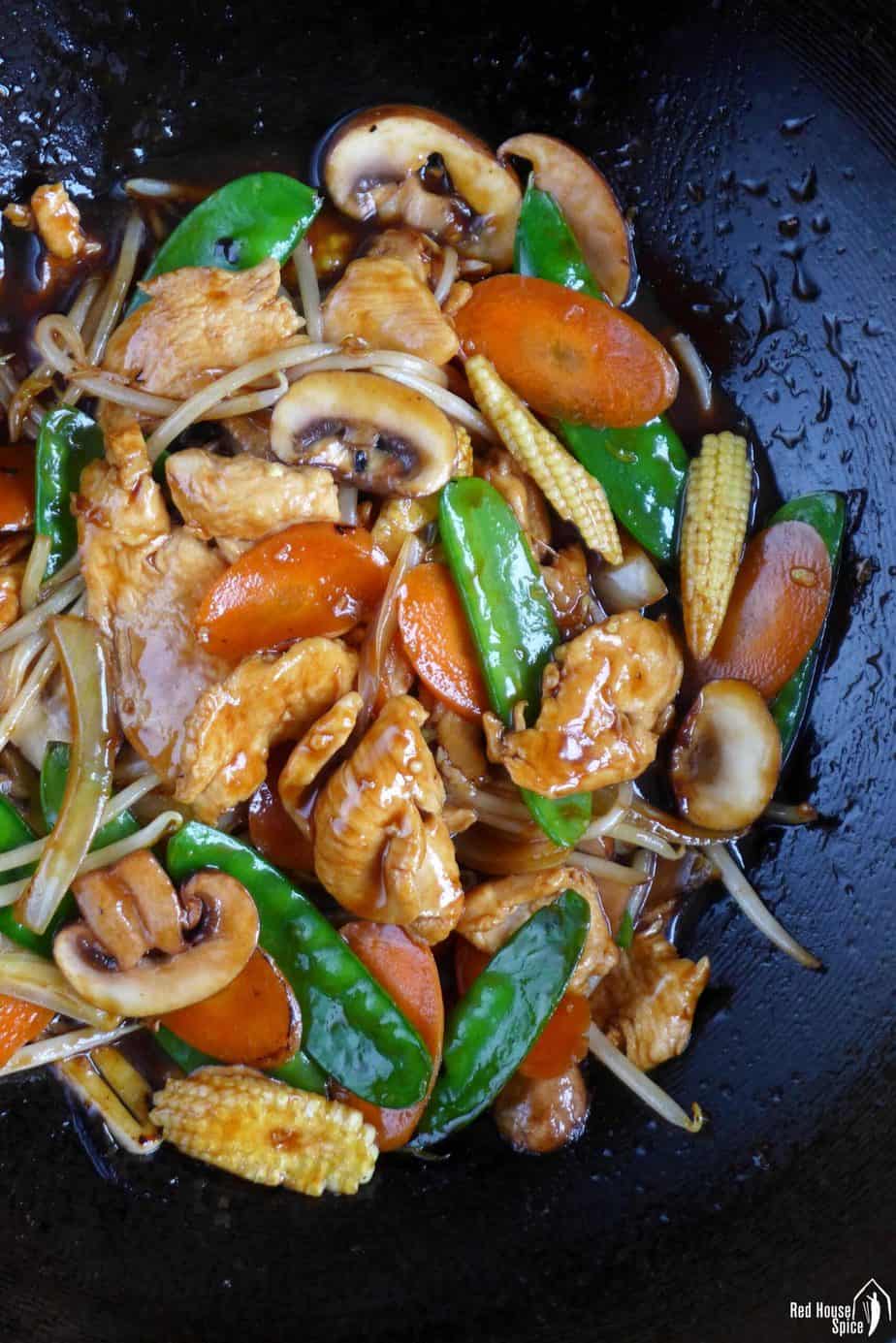
This chicken chop suey definitely tastes better if cooked in a traditional wok because it takes much less time to cook thus more moisture is retained inside the ingredients.
The problem of wok frying is that ingredients, particularly meat, sometimes sticks. First of all, make sure your wok is well seasoned. Secondly, don’t add oil and meat until the wok starts to smoke. Check out my post on how to season, maintain and use a carbon steel wok if you’d like to learn more.
However, if you’re using a non-stick wok, don’t heat the wok to a high temperature when empty. Pour in the oil as you turn on the heat. Add the chicken when the oil smokes.
Vegetable choices
Vegetables play an important role in chop suey stir-fries. They make the dish more nutritiously balanced, more visually appealing with vibrant colors and more pleasant on the palate with a crunchy texture.
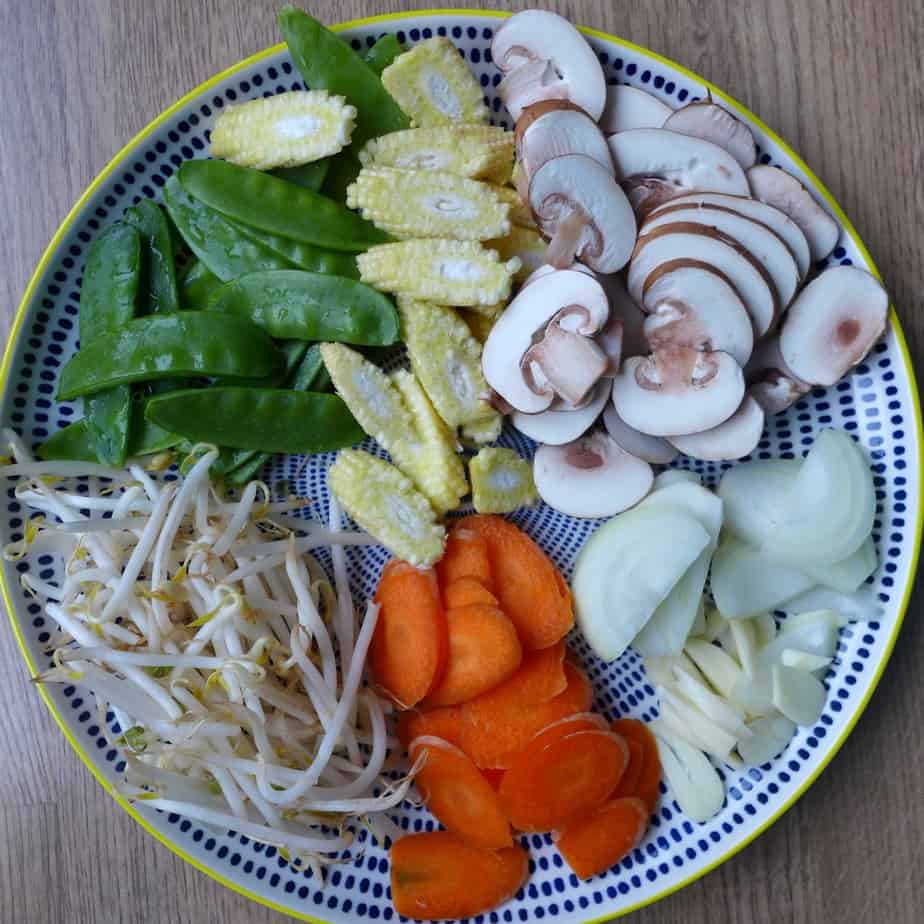
The vegetables that I include in today’s dish are all commonly available, so no extra trip to Chinese/Asian stores is required.
- Onion
- Carrot
- Snow peas (aka mangetout)
- Baby corn
- Button mushroom
- Mung bean sprouts
Please don’t limit yourself when choosing vegetables. It’s totally fine to come up with your own ideas or simply check what’s available in your fridge. Celery, bok choy, Chinese broccoli, bell pepper, asparagus, just to name a few.
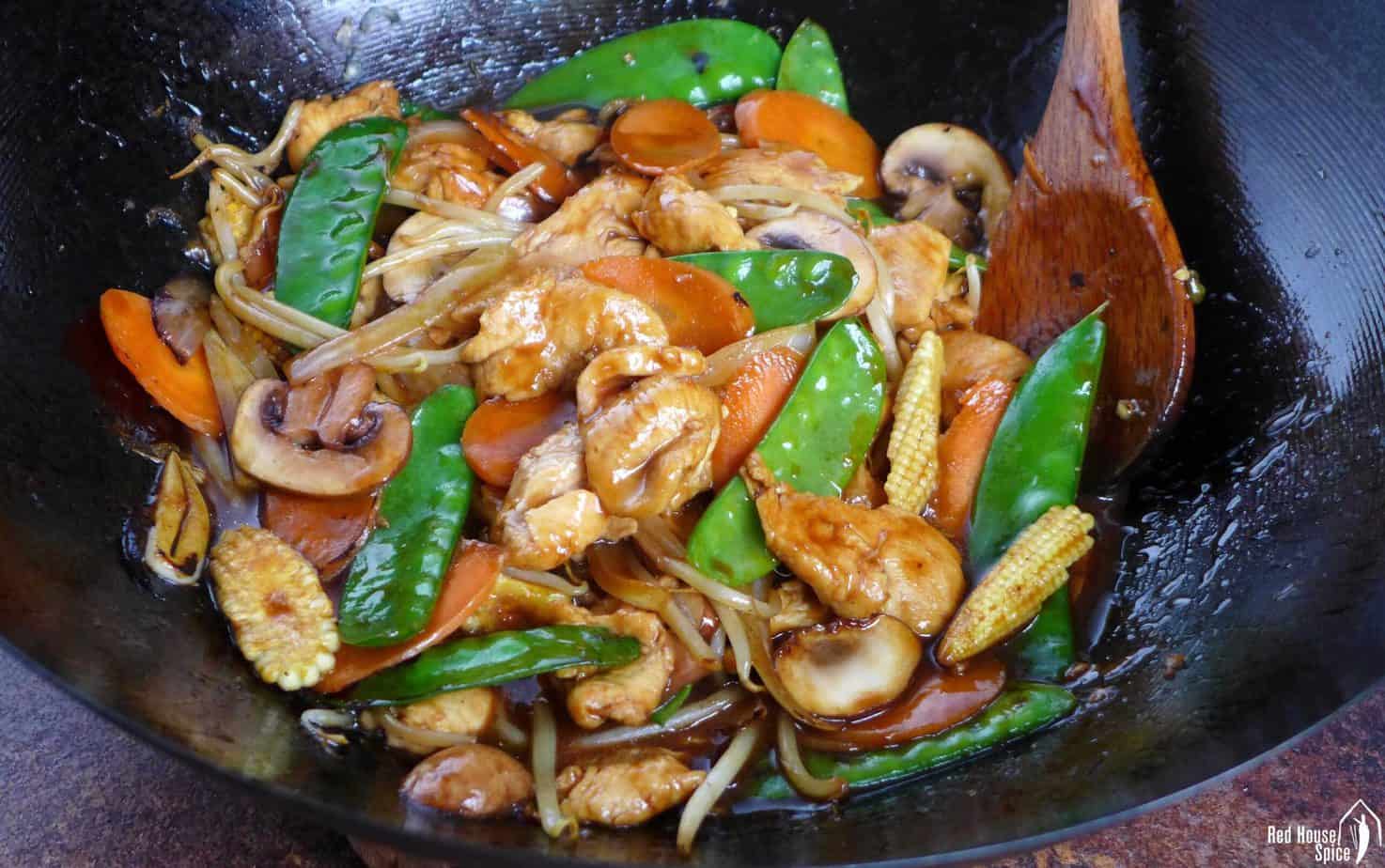
In my recipe below, you will notice that I have a particular sequence when adding vegetables to the wok. Also, bear in mind that they are supposed to remain crunchy so be careful not to overcook.
- Onion (with some garlic) goes into the oil first. Fry until it becomes fragrant.
- Then add carrot slices as it takes a little longer time to cook through than other vegetables.
- Snow peas and baby corn go in the next.
- Put in mushroom and mung bean sprouts last, along with the pre-cooked chicken. They can be cooked very quickly so you should avoid overcooking. Otherwise, the finished dish will become too watery.
An easy stir-fry sauce
Apart from deliciously cooked chicken, another element that makes chop suey appealing is its shiny, thick and scrumptious sauce. It covers every piece of chicken and vegetables thus makes every bite delightful.
The sauce for chicken chop suey calls for common Chinese seasonings that can be easily found in every Chinese store. Increasingly, mainstream supermarkets in many countries have them in stock as the interests in Asian/Chinese food grows.
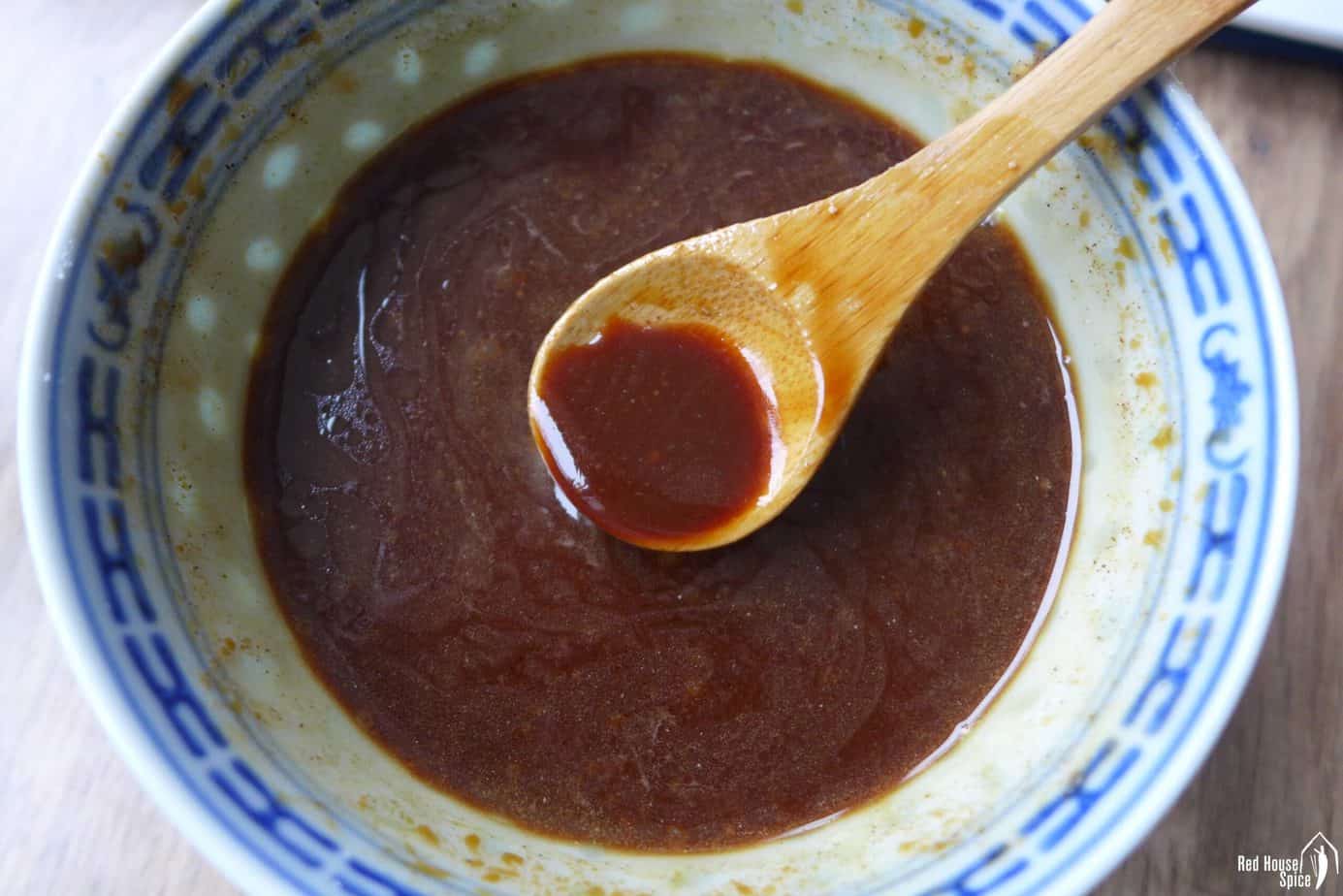
To make the sauce stand out, you’ll need a good ratio of ingredients that results in a well-balanced flavour and the desired consistency. Here is my formula:
- 1 tablespoon light soy sauce
- ½ tablespoon dark soy sauce. It’s for an appetizing brown look.
- 2 tablespoon oyster sauce. If your diet limits you on seafood, try the vegetarian version of oyster sauce which is known as “mushroom vegetarian stir-fry sauce”.
- ½ tsp sesame oil
- 1 tablespoon tapioca starch, or cornstarch
- ¼ tsp ground white pepper. Black pepper works too.
- 1 pinch salt
- 4 tablespoon water
If you love the taste of this easy stir-fry sauce (I believe you will!), don’t hesitate to create your own stir-fries with it.
A tip on the choice of starch
Starch is often used in Chinese stir-fries as a thickening agent for the sauce. In most cases, tapioca starch and cornstarch are interchangeable. As the latter is more accessible, I often suggest it in my recipes.
However, these two types of starch do have slight differences if you examine closely.
- The sauce using tapioca starch tends to stay thick as the dish cools and it looks a little shinier.
- The sauce using corn starch has a duller look and it becomes more watery while the temperature of the dish drops.
If possible, I’d suggest you use tapioca starch for this chicken chop suey.
Other protein options
Knowing all the tips and tricks to make a delicious plate of chicken chop suey, you can go one step further to create chop suey dishes with other types of protein using the same method and formula. Here are a few suggestions:
- Beef or pork. Slice the meat (preferably tender cuts) against the grain into thin slices. Marinate with the same ingredients but add a little Shaoxing rice wine, if available, to eliminate the gamey taste.
- Shrimp or prawn. Remove the head and peel. Use the same ingredients to marinate.
- Egg (Vegetarian). Scramble the egg following the method for Tomato & Egg Stir-fry. Put it back to the wok at the end of the cooking process.
- Tofu (Vegan). Fry tofu pieces using the method for Pan-fried Tofu with Garlic Sauce. Then add to the vegetables at the end.
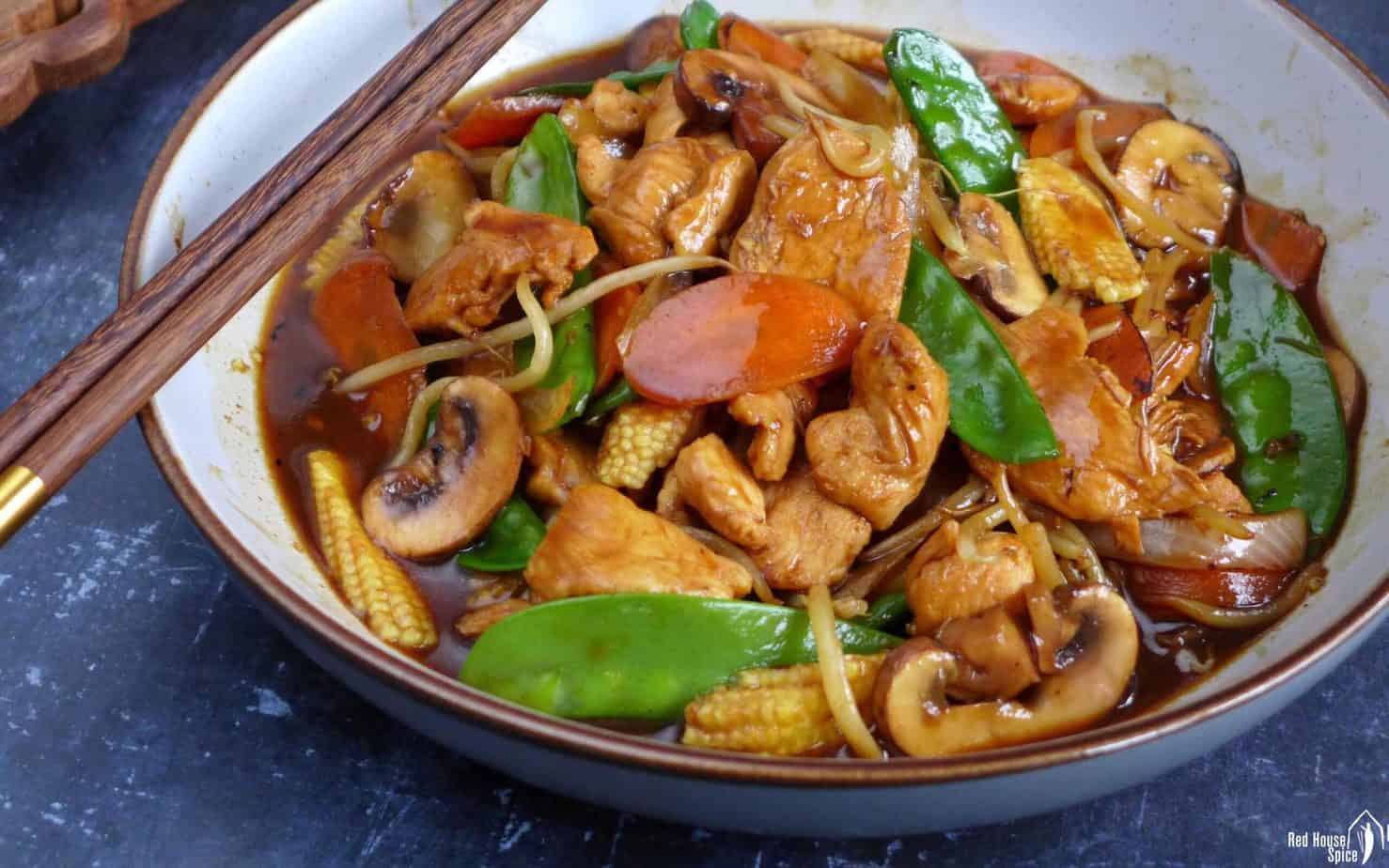
More stir-frie dishes
Want more recipes that are quick, easy and tasty? Why not check out these classic dishes:
- Chicken with Black Bean Sauce, a simple recipe that only calls for 5 ingredients and requires 15 minutes.
- Beef & Chinese Broccoli Stir-fry, a classic Cantonese dish that showcases a great example of how to combine meat and vegetables in a delectable way.
- Moo Shu Pork. My recipe shows you how it’s made traditionally. It’s quite different from what you’d get from a Chinese takeaway. But it tastes equally delicious, if not better.
- Hot & Sour Napa Cabbage. It’s my favourite way to cook this healthy, versatile vegetable. Its seasoning can be used for other vegetables too.
- Tomato & Egg Stir-fry. It may sound simple but the flavour is amazingly good.
- Bok Choy Stir-fry. A 5-minute quick dish using minimum ingredients, it’s healthy and delightful to eat.
📋 Recipe card
Love this recipe? Please leave a 5-star 🌟🌟🌟🌟🌟 rating in the recipe card below & if you REALLY like it, consider leaving a comment as well!
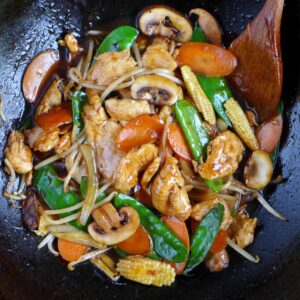
Chicken Chop Suey (with an easy stir-fry sauce)
Ingredients
For the chicken
- 1 piece chicken breast, about 180g/6.3oz
- ½ tablespoon tapioca starch, or cornstarch
- 1 pinch salt
- 1 tablespoon water
- 1 drop cooking oil
For the sauce
- 1 tablespoon light soy sauce
- ½ tablespoon dark soy sauce
- 2 tablespoon oyster sauce - see note 1
- ½ teaspoon sesame oil
- 1 tablespoon tapioca starch, or cornstarch - see note 2
- 1 pinch salt
- ¼ teaspoon ground white pepper
- 4 tablespoon water
For the vegetables
- ½ onion, sliced
- 2 cloves garlic, sliced
- 1 small carrot, thinly sliced
- 1 handful snow peas (mangetout), strings removed
- 3 baby corn, diagonally sliced
- 3 button mushroom, sliced
- 1 handful mung bean sprouts
You also need
- 1½ tablespoon neutral cooking oil, divided
Instructions
Marinate the chicken
- Cut chicken breast crosswise into thin slices (about 5mm/0.2inch). Put into a bowl.
- Add tapioca starch (or corn starch) and water. Stir well to evenly coat the chicken.
- Then add a drop of oil and mix well. Set aside.
Mix the sauce
- In a small bowl, mix all the ingredients for the sauce. Set aside.
Cook the chicken
- Heat up a wok over high heat until it smokes (see note 3). Pour in 1 tablespoon of oil.
- Slide in the chicken. Transfer it out as soon as it loses the pinkness (Do not overcook). Set aside.
Combine the dish
- Pour the remaining ½ tablespoon of oil into the wok. Firstly fry onion and garlic over high heat until fragrant.
- Add carrot and fry for 15 seconds or so. Then snow pea and baby corn go in. Stir fry for another 20 seconds.
- Put the chicken back into the wok, along with mushroom and mung bean sprouts. Cook for 30 seconds.
- Give the sauce a good stir (in case the starch sits at the bottom) then pour over. Mix well.
- As soon as you see the liquid thickening, transfer everything to a serving dish. Enjoy immediately with plain rice or as a topping for noodles.
Video
NOTES
NUTRITION
NUTRITION DISCLOSURE: Nutritional information on this website is provided as a courtesy to readers. It should be considered estimates. Please use your own brand nutritional values or your preferred nutrition calculator to double check against our estimates.


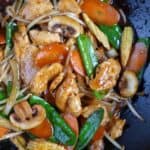
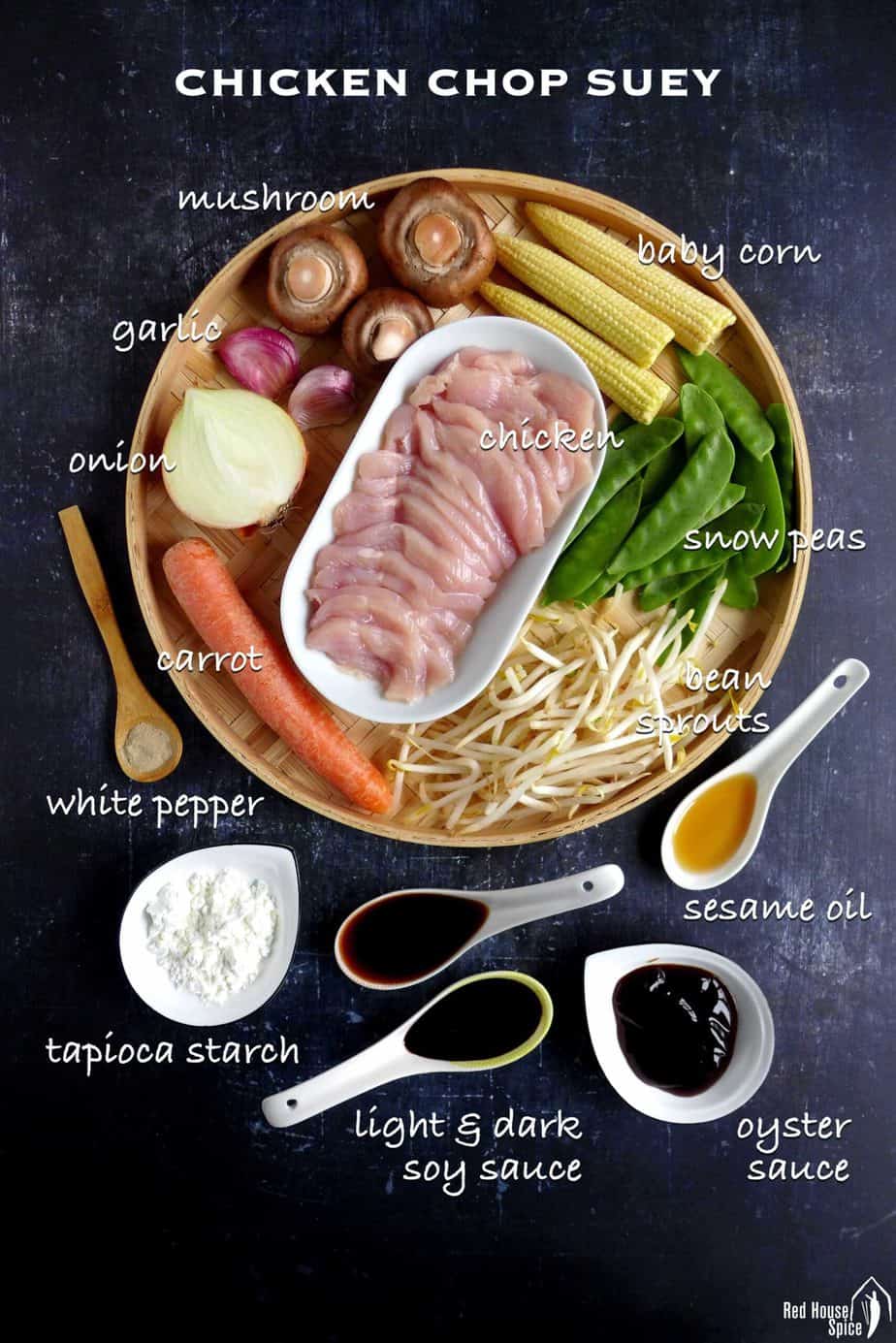
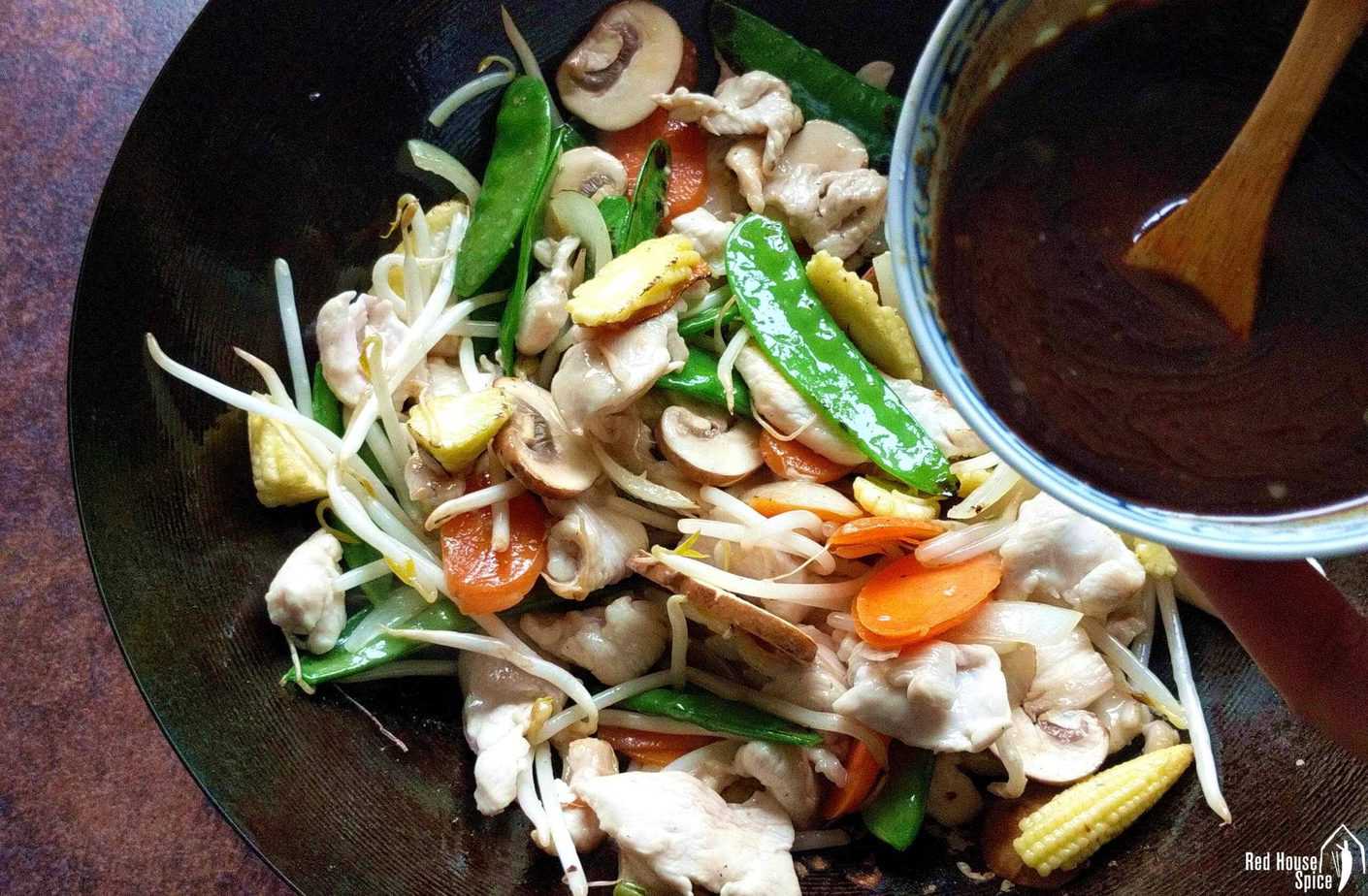
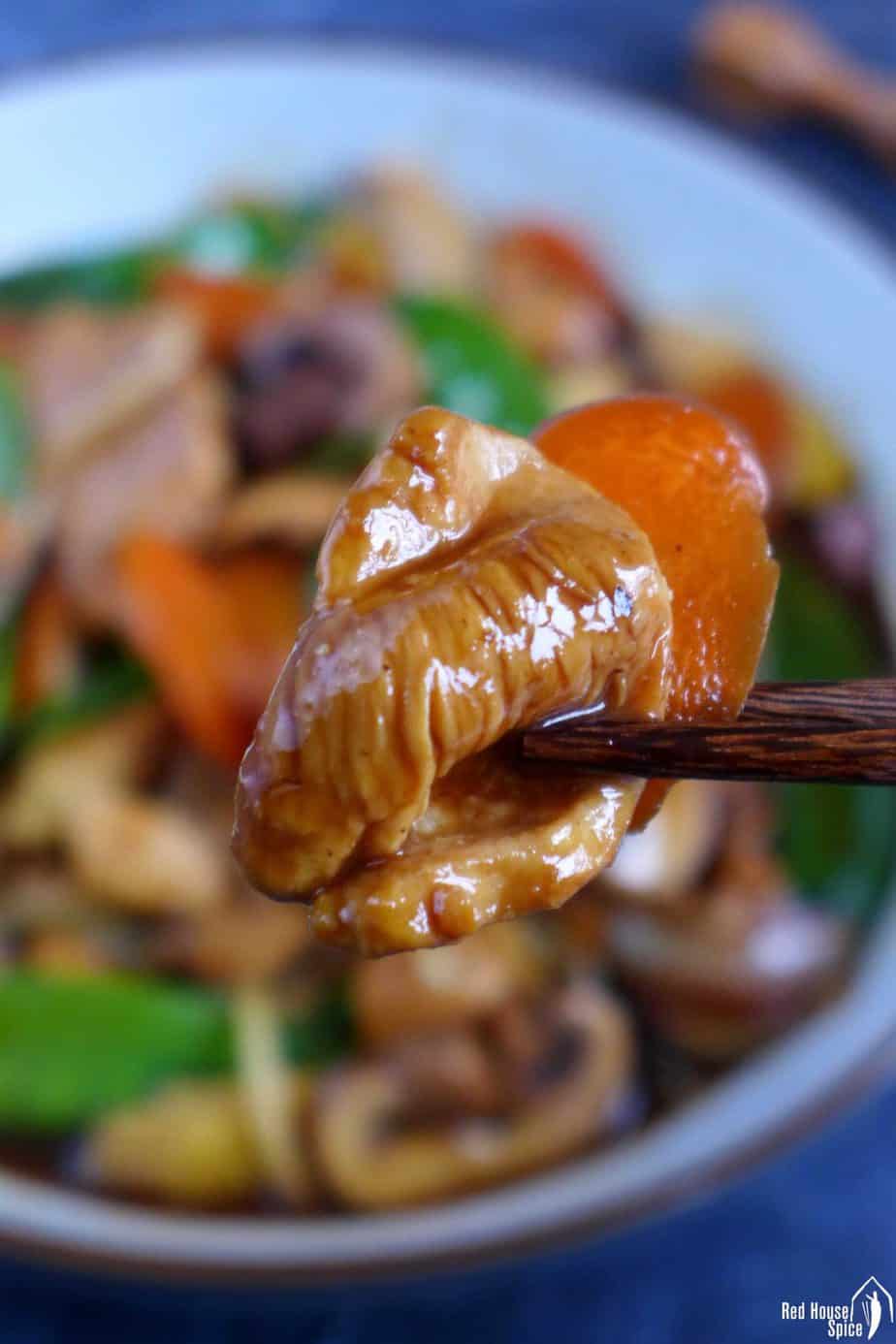

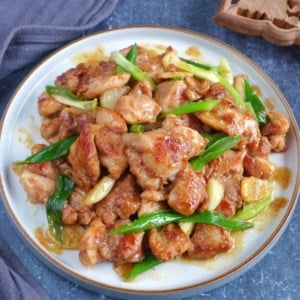
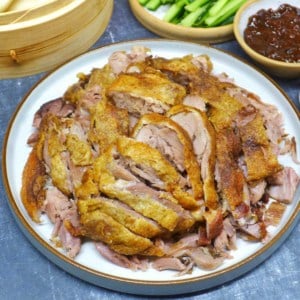

absolutely a perfect weeknight dinner. Fast and delicious! And thank you thank you thank you for the detailed and clear and easy recipe instructions, I can always trust your recipes to come out as intended. I double the recipe and we had it yesterday over leftover rice and today I’ll make noodles with it.
That’s so wonderful to hear Evelyn! Yes, it goes well with both rice and noodles.
Total respect to you for posting a Chop Suey recipe!
Here in the U.S., when I was young, this was probably the first dish a person would consume as ‘Chinese food’. During some time, one could even buy canned versions of it!
For the past few decades, it has completely disappeared from Chinese restaurant menus in the San Francisco Bay Area, given it’s inauthenticity as a Chinese dish.
Still, as noted here, the ingredients combination and cooking style certainly evoke many traditional Chinese dishes and are adaptable for a very satisfying meal.
Whatever its origins, hats off to a hearty chop suey.
Thank you!
My pleasure to share Yodan! Totally agree with you that Chop Suey showcases many characteristics of tradition Chinese cooking and is indeed a legendary dish to celebrate.
Hi Wei, i know this is often also made with white sauce, do you happen to have the recipe for that also ?
I love your recipes and have made quite a few already.
Thanks for sharing
Henk
Hi Henk! I’ve never had this dish with a “white sauce” so I’m afraid I can’t help you with this.
Hi Marcia
I have an electric wok and and a large frying pan. Both work well with Wei’s recipes. I’ve been thinking of buying a flat-bottomed carbon steel wok which works very happily on an electric element.